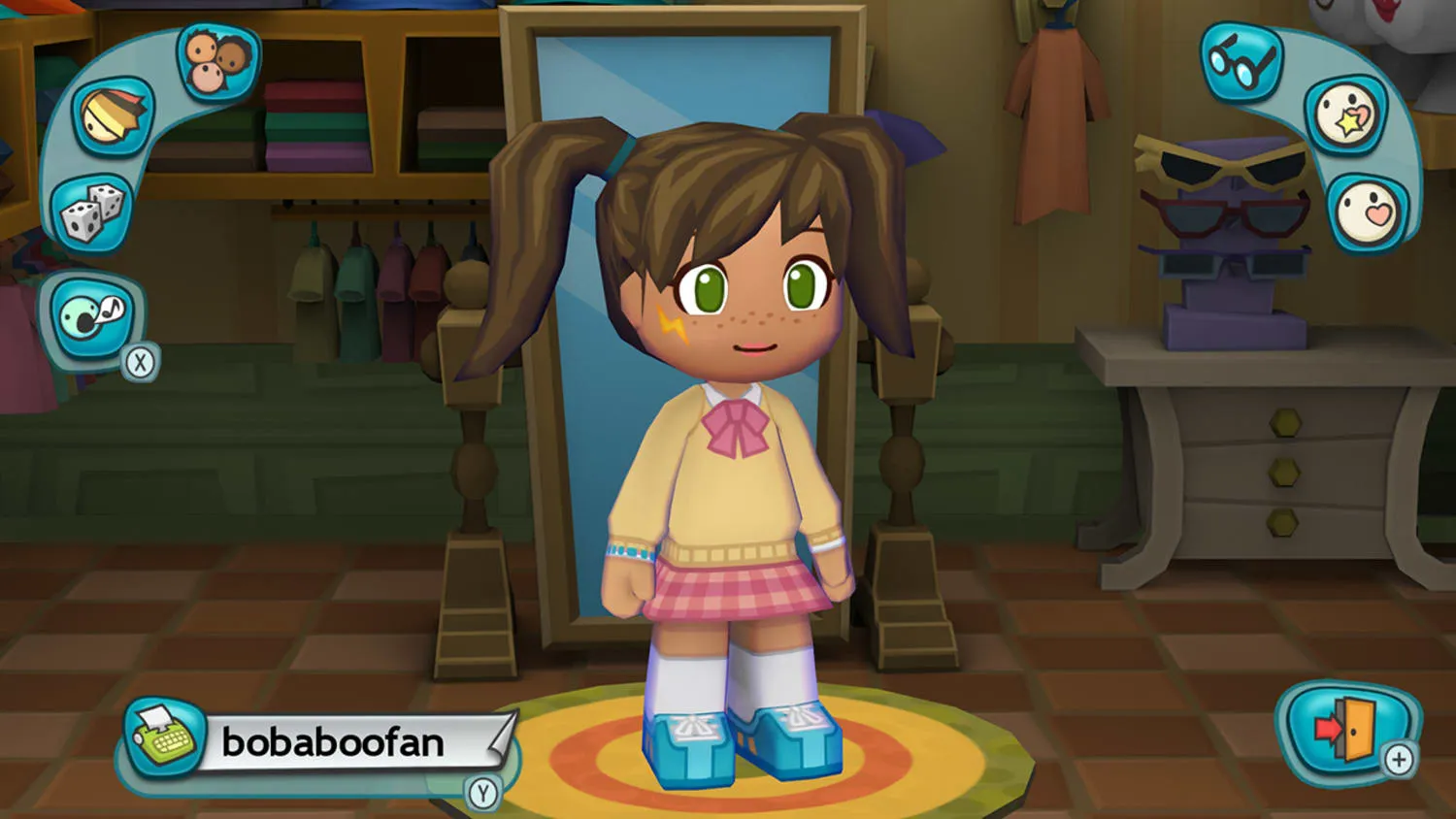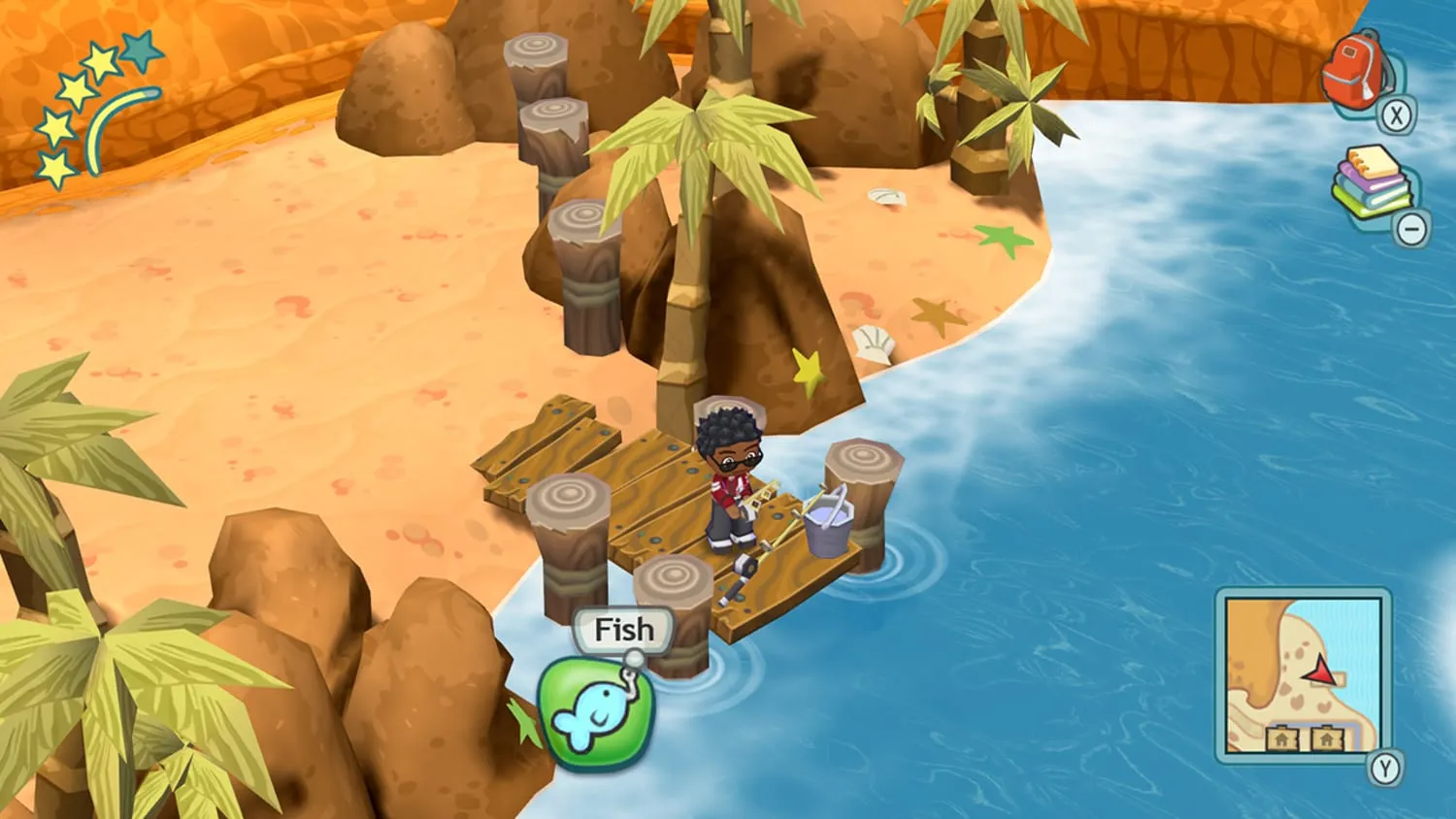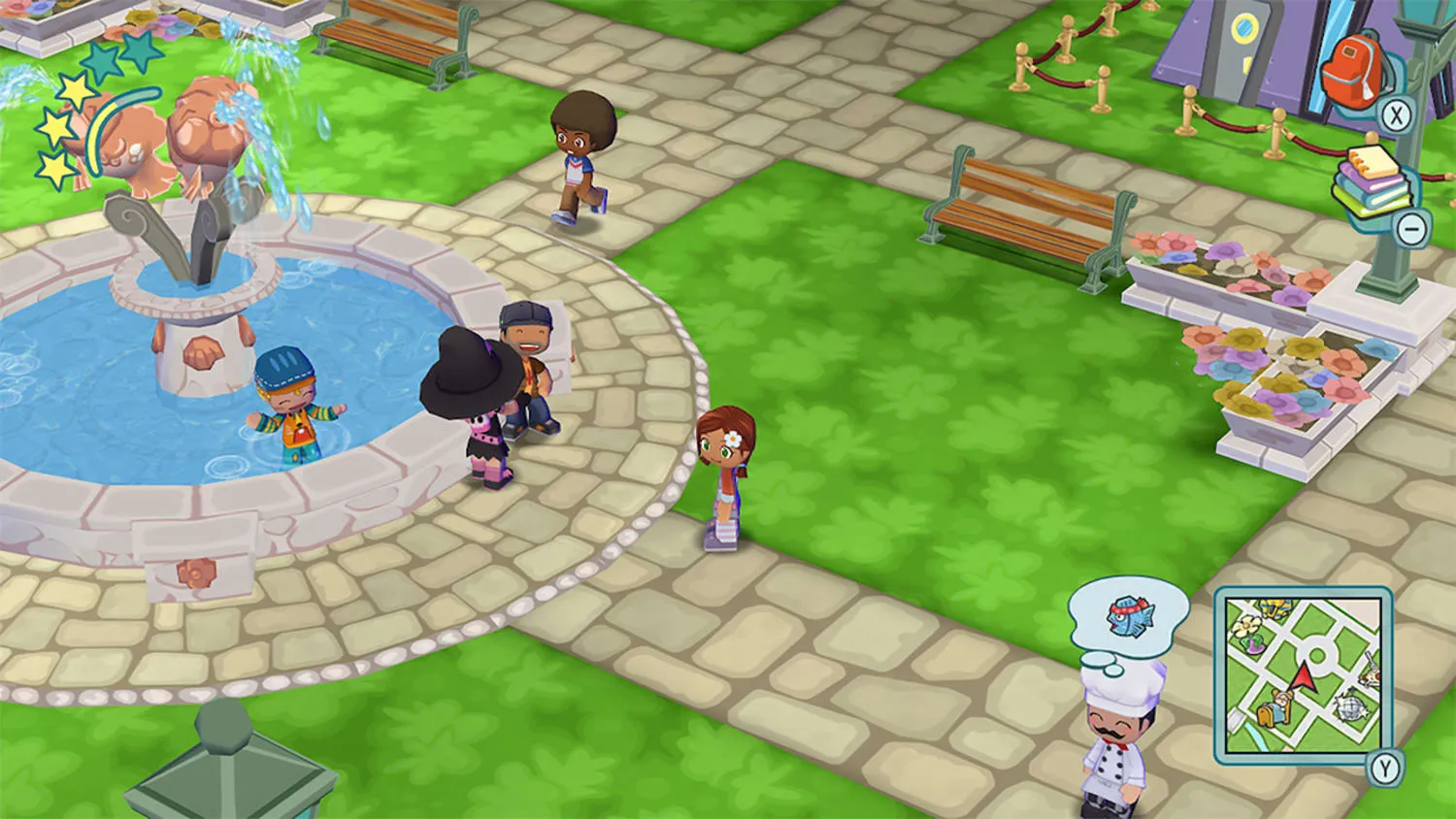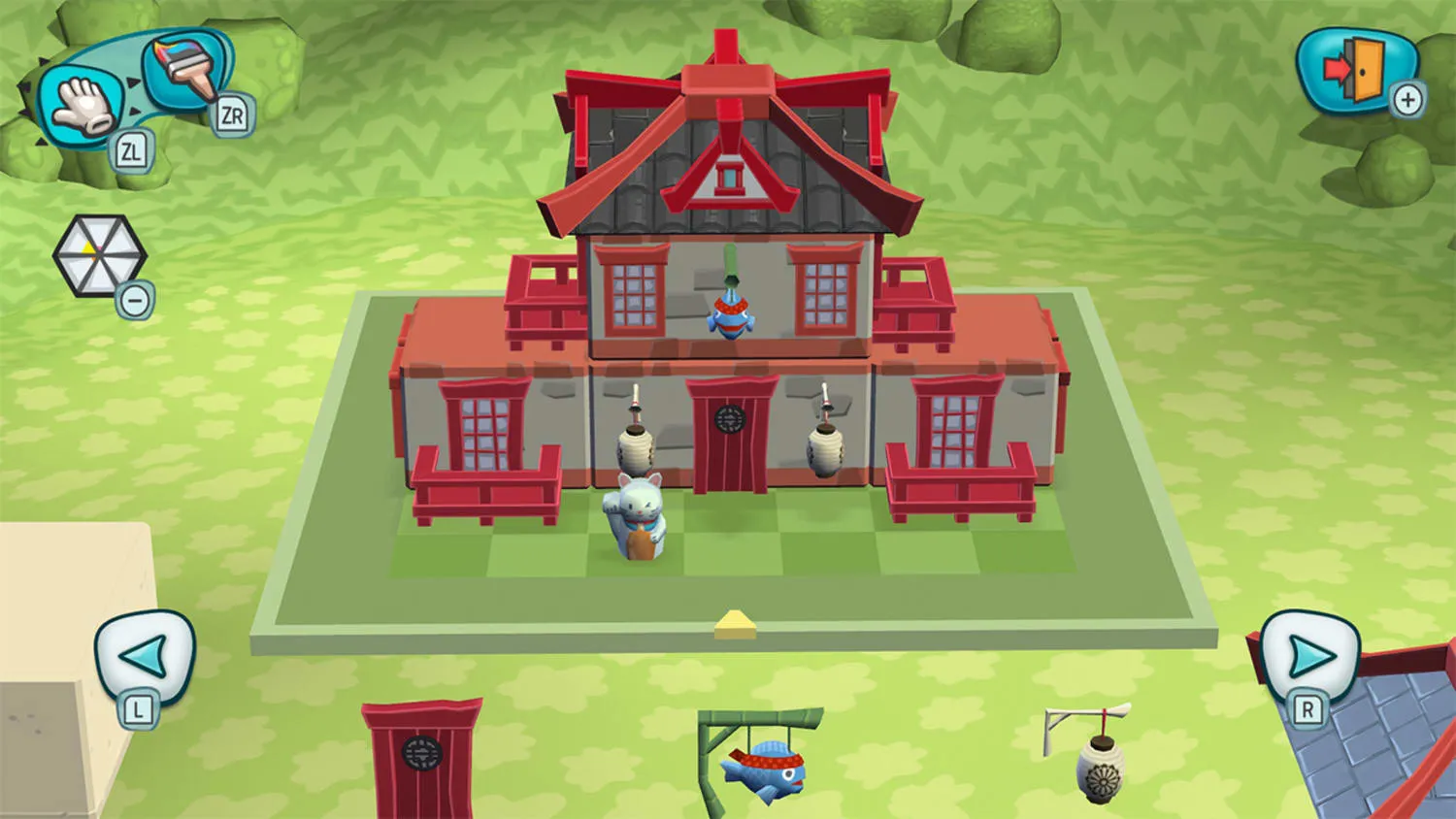The MySims: Cozy Bundle combines two beloved titles, MySims and MySims Kingdom, which were first released on the Nintendo Wii and DS over a decade ago. This updated collection takes players on a nostalgic journey through chibi-styled town-building and whimsical fantasy, welcoming new and returning fans to experience its charm on the Nintendo Switch.
The importance of this bundle resides not just in its improved visuals but also in its accessibility, as it offers a moderate introduction to life simulation games for younger audiences while engaging seasoned gamers.
Originally, these titles aimed to capitalize on the growing popularity of social simulation games like Animal Crossing. They presented an enticing universe in which player creativity was the major means of progression.
Much of the original design is retained in the remaster, focusing on building, exploration, and character interaction, all of which remain integral to the gameplay experience. By putting players in jobs that require them to rebuild communities, MySims and MySims Kingdom foster a sense of ownership and engagement in their environments, making them especially relevant in today’s gaming world.
Gameplay Mechanics: A Relaxing Experience
At its foundation, MySims: Cozy Bundle relies on a deceptively basic loop to immerse players in an engaging and pleasant experience. The fundamental goal is to restore and revitalize a community, offering a flexible and fulfilling structure. MySims lets players engage with its environment at their leisure, creating a relaxed ambiance that appeals to casual gamers and those seeking a more immersive experience.
Players begin by creating their own Sim and quickly become immersed in repairing a lovely village or a colorful country. This entails completing numerous building projects, which serve as the gameplay’s foundation. Each mission needs players to collect ingredients (known as essences) through activities such as fishing, mining, and gardening.
This gathering feature is similar to resource management in titles such as Stardew Valley, where the grind becomes a meditative process rather than a chore. Players quickly find themselves in a gratifying routine of acquiring resources, creating structures, and meeting their neighbors’ unusual needs.
What distinguishes MySims is the incorporation of player choice into these chores. Each building project not only improves the aesthetics of the environment but also affects the happiness of the town’s population. Although social interactions are restricted and frequently centered on satisfying requests for items rather than establishing relationships, the decisions players make when making and placing their creations foster a sense of ownership and emotional engagement in the community.
This balance of creativity and consequence is reminiscent of titles like Animal Crossing, which have community and personal expression theme elements. While the narrative lacks the depth found in more complicated RPGs, the emotional gratification gained from witnessing a town thrive under your care is certainly fulfilling, making each tiny victory feel significant in the larger context of the game.
Building System: Creativity Unleashed
The building engine in MySims: Cozy Bundle is a bright canvas for player creativity, allowing for a fun study of design and customization. The blueprint concept is central to this experience, allowing players to snap together diverse components in 3D space.
This mechanic is reminiscent of the Gummi Ship editor in Kingdom Hearts, where assembling pieces creates a sense of ownership and personal expression. Each building project begins with a basic set of parts, but from there, players can use their imagination to add decorative aspects and adjust designs to their desire.
Customization options are abundant, allowing players to experiment with different colors and styles. This adaptability converts each project into a manifestation of the player’s ideas, making the environment feel more personal and alive.
While the concept allows for a satisfying amount of creativity, it can feel relatively limited compared to more complex construction games such as The Sims 4, where the sheer volume of items provides a broader palette for building. The charm of simplicity is more of a focus in MySims, which may be invigorating and constraining, depending on player expectations.
In MySims Kingdom, the addition of contraptions brings a new level of complexity and involvement to building mechanics. Players are tasked with designing wacky gadgets frequently requiring solving contextual challenges, such as connecting gears to trigger a mechanism.
This shift from just decorative to practical design increases gameplay variation and includes a problem-solving element frequently absent in traditional life simulations. The contraptions not only expand the duties available to players but also strengthen the thematic connection to the game’s narrative of restoration and creativity, as players physically bring the kingdom back to life through innovative constructs.
Finally, the building technology in MySims and its sequel balances accessibility and creativity. Its charm enables players to engage with their environment meaningfully, fostering community and personal interest in their creations.
Characters and Interactions: Adding Depth
MySims: Cozy Bundle’s characters bring individuality and charm to the whimsical setting, adding depth to the experience. Notable characters include Patrick Rhino, a food-loving former truck driver, and Poppy, the perennially dozing flower store owner, who reflect the game’s colorful cast.
Each character makes distinct requests and interactions, inviting players to engage with the gameplay mechanics and the community’s narrative weave. Players can create a sense of connection to the characters through these interactions, which are frequently focused on completing tasks. This increases their emotional engagement in the game’s overarching narrative.
The interaction mechanics are straightforward but effective. Players often engage with characters through speech and task completion, with each encounter revealing more about the residents’ personalities and needs. Building relationships is integral to gameplay in titles like Animal Crossing, and this structure is similar to those dynamics.
However, while MySims has a charming cast of characters, the depth of these interactions might feel limited. Unlike more nuanced RPGs with extensive dialogue trees and important choices, MySims has a simplified structure emphasizing accessibility.
Regardless, character interactions have a big impact on gameplay. Fulfilling requests not only develops the narrative but also opens up new building opportunities and resources, emphasizing the notion of community regeneration. Every interaction feels intentional, adding to a sense of progression that keeps players engaged. While the relationships lack the emotional depth found in more complex RPGs, they produce a gratifying gameplay loop consistent with the game’s overall ethos of creativity and connection.
Narrative Design: A Tale of Restoration
MySims’ narrative framework is based on a common but engaging premise: players take on the role of a builder tasked with revitalizing a once-thriving village that has fallen into decay. Set against a cute, chibi-style setting, the player’s task is to meet the townspeople’s needs by building homes, furnishings, and community areas.
This straightforward narrative provides a compelling explanation for the core gameplay mechanics, neatly linking the act of building to the broader subject of restoration. The story’s simplicity lets players focus on creativity rather than complicated storyline subtleties, making it suitable for younger audiences and appealing to adults seeking a nostalgic experience.
The MySims Kingdom, on the other hand, expands on its predecessor’s narrative by introducing a humorous fantasy setting. Players play the role of a Wandolier, a magical builder tasked by King Roland with restoring a kingdom spread across several themed islands.
This shift enriches the atmosphere and improves the plot by taking a more structured approach, with quirky quests and character-driven dialogue that add humor and depth to the experience. The many environments, which range from a nature reserve to a party island, promote exploration and discovery, providing depth to the gameplay that MySims lacks.
While both games share the theme of restoration, MySims Kingdom’s narrative improvements increase player interest by incorporating humor and character backstories into the building mechanics. This greater narrative connection creates a more immersive experience, allowing players to invest emotionally in the characters and the environments they are tasked with reviving.
Technical Aspects: Remastering for Switch
MySims: Cozy Bundle’s remastering for the Nintendo Switch includes a pleasant visual boost while retaining the series’ trademark chibi appearance. While not groundbreaking by modern standards, the graphics benefit from HD upgrades that make the bright environments and eccentric character designs jump out on the screen.
Performance remains consistent, with steady frame rates that allow for an unbroken building experience, which is essential for keeping the game’s calm feel. However, the graphical upgrades do not fully close the gap with newer titles, leaving some players hoping for a more significant overhaul.
One of the more contentious alterations in this remaster is the removal of motion controls, which were an integral part of the original Wii experience. In the past, players could easily control things and navigate the environment, improving immersion. The Switch’s Switch to traditional controls feels clumsy in comparison, especially when managing the building mechanics.
This change reduces the intuitive aspect of gameplay, making activities feel less responsive and more difficult. While touchscreen support in handheld mode is a partial solution, the lack of motion controls limits overall ease of engagement, compromising the seamless creativity players anticipate from this renowned franchise.
Nostalgic Charm vs. Modern Expectations
The MySims: Cozy Bundle elicits a pleasant wave of nostalgia, enveloping players in the familiar warmth of its attractive graphics and funny characters. For those who appreciated the original titles, the experience is a welcome throwback to the days of imaginative town-building and amusing interactions.
The vivid graphics and cheerful narrative provide a sense of joy that is frequently absent in more serious modern titles. This vintage charm contributes significantly to the overall enjoyment of the bundle, making it a worthwhile experience for returning fans.
However, this remaster raises concerns about modern game standards. New players unfamiliar with the original games may find the mechanics basic and lacking the depth seen in many modern RPGs and simulation games.
While the building mechanics and character interactions are engaging, they can feel limiting compared to titles such as Stardew Valley and Animal Crossing: New Horizons. This gap may influence how beginners see the game, especially if they seek the complexity and narrative depth of modern products.
Ultimately, MySims: Cozy Bundle hits a balance between nostalgia and accessibility. While it may not fulfill the expectations of modern gamers seeking complicated systems and rich stories, it does give a pleasant, if straightforward, experience. MySims’ charm comes from its capacity to foster a sense of community and creativity, enabling players to engage in a playful adventure that, while not groundbreaking, is yet endearing.
The Review
MySims: Cozy Bundle
MySims: The cozy Bundle perfectly captures the nostalgic charm of its predecessors, offering a wonderful experience focused on community building and creativity. While the colors are vibrant and the gameplay is approachable, removing motion controls and other depth limits may alienate new players seeking current complexity. Overall, it's a pleasant return for aficionados, but it may leave newcomers wanting more.
PROS
- Charming graphics with a colorful, whimsical aesthetic.
- Engaging building mechanics that foster creativity.
- Nostalgic appeal for returning fans.
CONS
- Limited depth compared to modern RPGs and simulation games.
- Removal of motion controls affects gameplay fluidity.
- Some mechanics may feel simplistic for new players.





















































